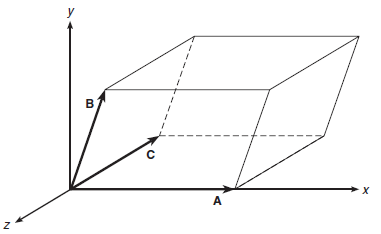Muscular and Mechanical Isolation
- The principle of action and reaction illustrates once more the impossibility of muscular or mechanical isolation in the physiological mechanism[1] of man.
- The motionless state may result (and usually does) from a multiplicity of forces, the total effect of which is equal and opposite.
- It is the familiar principle of the parallelepiped of forces.

- Lack of motion frequently results in the necessary fixation of some point as a fulcrum.
- The muscle pulling the index finger toward the thumb is joined to the bone which carries also the connection of the thumb adductor.
- When it is desired to abduct the second finger toward the thumb, the position of the thumb must be fixed to act as a fulcrum.
- Consequently, the extensors of the thumb are contracted.
- Without the action of the extensors of the thumb, the thumb would move toward the second the finger.
- What is observed? Only one finger moves, but the necessary muscular coordination is not restricted to that finger.
- When we record the position of the various joints or parts of the arm during a movement, we find that what appears to be a motionless state is in reality a minute movement.
- Each finger has 3 joints
- hand knuckle (metacarpophalangeal): The hand knuckle consists of the first phalanx and metacarpal bone.
- midjoint : Connection between the first phalanx and second phalanx.
- nailjoint. Connection between the second phalanx and third phalanx. Both the midjoint and nail joint are interphalangeal.
- The method of direct lever recording was used. During this procedure, one aluminum lever being attached closely behind the second finger joint (first interphalangeal) of the index finger.
- The other lever was attached between the hand-knuckles of the third and fourth fingers.
- In order to detect very small movements in the hand knuckle, the leer was so adjusted that these appeared on the record magnified three times.
- Reading from left to right, we find both finger and hand stationary.
- The first part of finger descent is accompanied by a similar descent in the hand itself.
- This indicates that the player making this movement is using some forearm or wrist movement.
- When the finger reaches the key surface the hand knuckle is affected.
- The retardation of finger descent resulting from the resistance of the key is directly reflected in the ascent of the hand knuckle.
- When the key is fully depressed the effect upon the hand knuckle is naturally more marked.
- The significant point is that even the slight resistance introduced by the piano key is not without some effect upon the hand-knuckle.
- To infer the absence of this reaction would be to misconstrue entirely the underlying mechanical principle.
- The reaction of finger key-bed impact upon the wrist is seen in Figure 7.1

- A non-percussive touch was used in this instance, hence there is no retardation in the descent of the finger until the key is fully depressed.
- At that moment the line recording wrist movement rises, and as the finger subsequently rises, the wrist in reaction falls again to the original level.
- This reaction goes past the wrist and to the elbow.
- At the point a, the finger has not met any resistance, and is travelling freely through the air, hence there cannot be impact-reaction at another joint.
- This fact is conclusively shown by recording the movements of finger and hand when the former is moved without meeting any resistance.
[1]Physiology mechanism: from Ancient Greek (physis), meaning 'nature, origin', and (-logia), meaning 'study of') is the scientific study
of the functions and mechanisms which work within a living system.